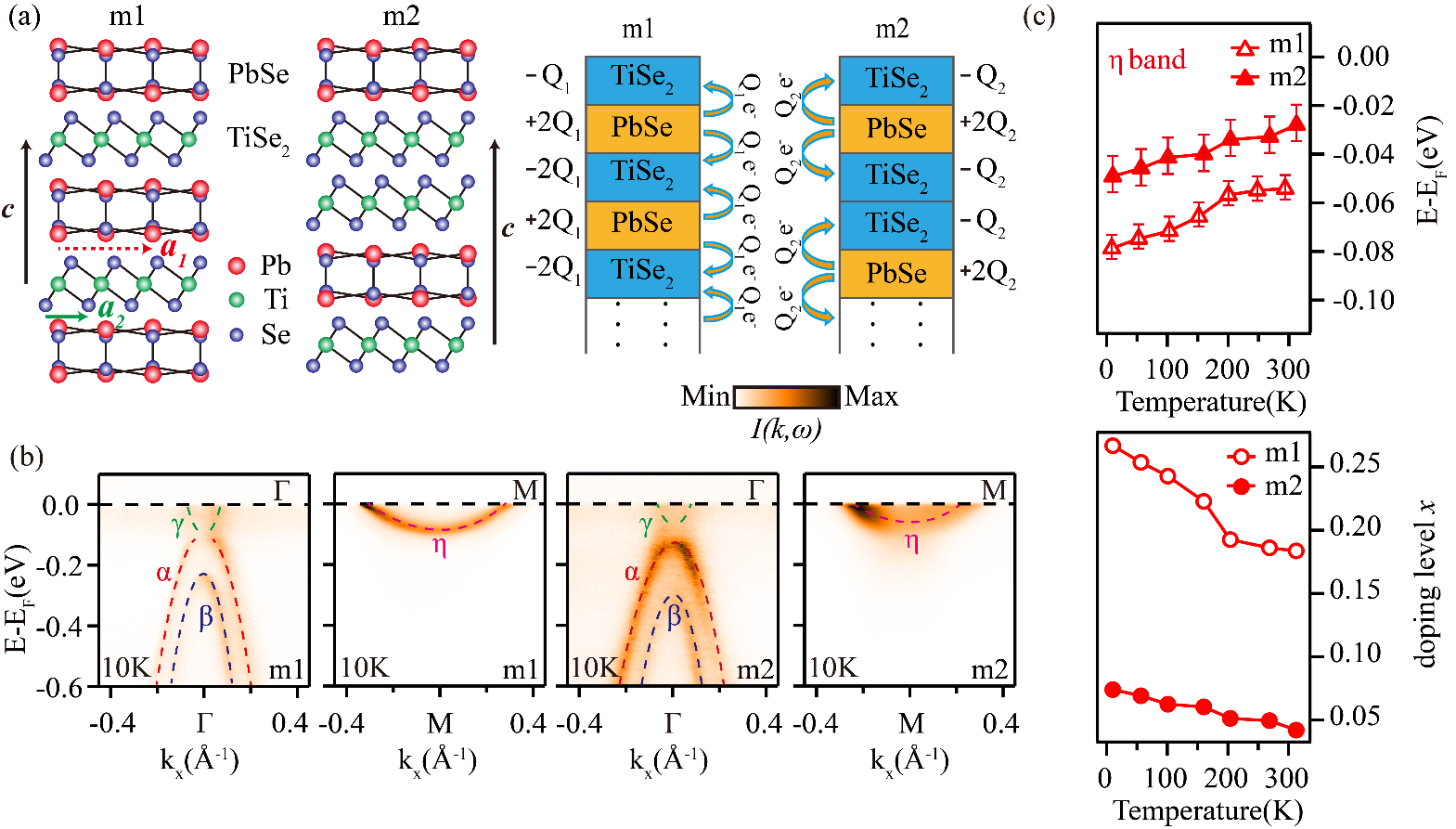SIGNIFICANT ACHIEVEMENT ON NATURALLY OCCURRING VAN DER WAALS HETEROSTRUCTURES MADE BY SIMIT
Date:23-03-2018 | 【Print】 【close】
Recently, one research group from CAS Center for Excellence in Superconducting Electronics of SIMIT, leaded by Prof. Dawei Shen, successfully achieved the high-resolution low-lying electronic structure of (PbSe)1.16(TiSe2)m (m=1, 2), a kind of naturally occurring van der Waals heterostructures (VDWHs), using the high-resolution angle-resolved photoemission spectroscopy(ARPES). They have observed striking charge transfer effects, which can be effectively tuned via the change of structure and temperature. Since charge transfer between different layers of VDWHs often dominates their novel properties and device performance, their results provide important insights for further understanding and applications of VDWHs. This work, tilted "Charge Transfer Effects in Naturally Occurring van der Waals Heterostructures (PbSe)1.16(TiSe2)m (m=1, 2)" has been published in the journal of Physical Review Letters on March 7th, 2018.
Boosted by the enormous effort put into graphene-like materials, research into artificial materials formed by stacking different two-dimensional (2D) crystals in a desired sequence, the so-called VDWHs, have gradually become a focus. Charge transfer effect is ubiquitous in these VDWHs and usually dominates their unconventional properties. However, general fabrication methods hinder the direct observation of charge effect by ARPES and scanning tunneling microscope(STM) due to the surface contamination and small size of the samples. This work takes advantage of the unique structure of misfit compounds (PbSe)1.16(TiSe2)m (m=1, 2) which are naturally occurring VDWHs and own cleavable crystal structure and absence of unwanted interlayer adsorbates, enabling the exploration of electronic structure by ARPES (Fig. 1). They reveal that the amount of charge transferred would increase unexpectedly by more than 250%, when the thickness of the TiSe2 layers is halved from m2 to m1. This effect is accompanied by a dramatic drop in the electron-phonon interaction strength far beyond the prediction of first-principles calculations. Furthermore, they observe that the charge transferred in both compounds is nearly halved when warmed from below 10K to room temperature, due to the different thermal expansion coefficients of the constituent layers of these misfit compounds. These findings of anomalous charge effects lay a foundation for further understanding and tuning VDWHs based on the manipulation of interlayer charge transfer.
This work is supported by the National Key R&D Program of the MOST of China and the National Science Foundation of China.
(https://journals.aps.org/prl/abstract/10.1103/PhysRevLett.120.106401.)
